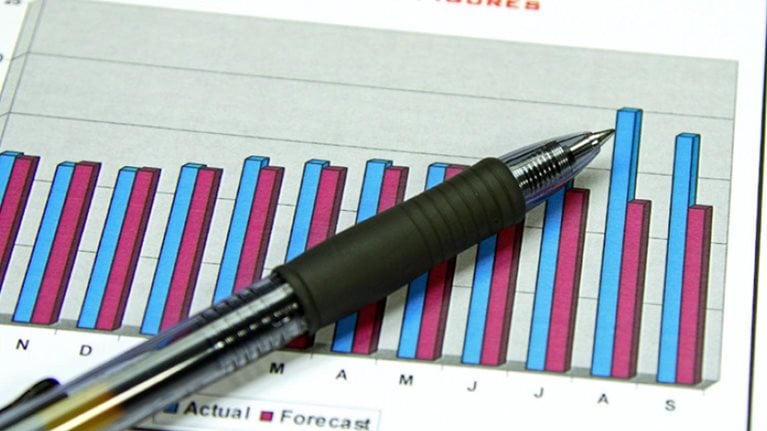Lending to lower-income households and small and informal enterprises is challenging. Many (though not all) of these customers have limited familiarity with formal financial services, which inhibits their ability to make good decisions about the responsible and appropriate use of credit. And lenders often have little to none of the data they might traditionally use to make sound lending decisions (for example, official proof of income and a credit history).
In this environment, most lenders have pursued one of two business models:
- traditional consumer finance, where lenders typically compensate for higher default incidence with higher interest rates while supplementing revenues with penalty and other fees
- microcredit, with its focus on informal, usually women-owned microenterprises, shorter-term loans (often of just a few months), labor-intensive but strong relationships between loan officers and borrowers, use of joint-liability groups (in which members guarantee their fellow borrowers’ loans), continuous lending cycles with borrowers taking on a new loan as soon as the last one is paid, and default rates as low as 2 to 3 percent
Neither of these models is ideal for cost-effectively serving the diverse needs of economically active lower-income families and businesses on a truly sustainable basis. But there is an opportunity for lenders to chart another path, using increased computing power and new sources of information and data (including mobile-phone usage patterns, utility-bill payment history, and others) to build better risk models. With these assets, and with scrupulous attention to privacy laws and customer consent and preferences, banks, retailers, utilities, and telecommunications providers can make responsible lending decisions in low-touch and low-cost ways.
At its best, this third path, beyond traditional consumer finance and microcredit, can help companies profitably serve vast unbanked populations, and can also help societies move toward an elusive goal: full financial inclusion. Today there are more than 2.5 billion people without access to formal financial services, and there are hundreds of millions of micro, small, and midsize enterprises with unmet financing needs.1 Ensuring that these people and groups have access to a range of quality, affordable, and appropriate financial services is on the agenda of governments and businesses worldwide. New uses of data and information move us closer to this vision by enabling a more complete understanding of households’ financial needs. With that understanding, providers can move beyond simple lending to achieve several aims:
- help customers make good financial decisions (for example, through the use of targeted alerts)
- offer the right noncredit products (various forms of savings and insurance, for instance)
- conduct marketing and communications in ways that are more likely to resonate for distinct segments
These are exciting areas that are ripe for further innovation. But lenders must first master the tools, data, and information that underpin the new approach to lower-income lending. The efforts of some pioneering lenders are quite promising: new alternative data models have cut credit losses in experimental forays into lower-income segments by 20 to 50 percent and doubled their application approval rates.
New data, new uses
Lenders need to look into the future to determine whether to make a loan. It used to be that the most reliable way to predict the future was to review the past; for centuries, long-standing banking and credit relationships provided banks with a reasonable basis for extending credit.
In developed markets, this approach has evolved over the past few decades: data such as credit reports and salary history now help lenders to make the same kind of predictions but on a larger scale and in an increasingly automated way. These credit-scoring approaches typically assess three characteristics:
- Identity, to reduce fraud
- Ability to repay, based on income and current debt load
- Willingness to repay, usually based on past credit performance
These methods are less effective, however, in emerging economies, and especially among lower-income segments. Because lower-income customers often have no access to formal financing, there is no record of past borrowing behavior. Debt capacity is hard to judge because most lower-income workers are often paid wages in cash and have little or no formal savings or registered assets that could be used as collateral. Many do not receive regular fixed wages, but rather are self-employed or depend on a portfolio of income-earning activities that is inconsistent by nature.
Some nontraditional lenders, however, are successfully getting around these problems. A handful of pioneering mobile operators, utilities, retailers, and direct-sales companies are using new approaches to tap into the new forms of data spun off from their core businesses.
These new approaches have their own challenges. Traditional credit scoring draws on a thin stream of data collected monthly from a small number of sources (for example, credit cards, savings accounts, pay stubs, and mortgages). The new nontraditional data, on the other hand, must sometimes be gathered from diverse sources, and the volume is often several times that of traditional sources. For example, each mobile account may generate hundreds or even thousands of calls and text messages per month, each carrying a rich data set that, subject to customer consent, can include the time the call was made, the location of the caller at the time of the call, who received the call, the type of information accessed via text messaging, and the types and number of payment transactions made through the device.
That poses difficulties for risk modelers. While some new technologies are throwing off reams of data, others are allowing us to collect, aggregate, and analyze them in ways never before possible. There are new data standards and protocols, and new tools to bring together disparate data sets, matching and comparing them to generate insights. Many practitioners are not yet skilled in these and are unfamiliar with aggregating diverse and oblique data to derive meaningful insights. For example, an organization that wants to use data gathered from mobile operators, grocery stores, and utilities will probably need to have expertise in each of these sectors to determine which data are meaningful, what level of detail is optimal, and what combinations of data are most effective.
Gaining access to data can be difficult as well. In many cases, the data sets that lenders want will be owned by entities (telecommunications companies, utilities, or retailers, for instance) that may not want—or are not allowed—to share them. They may be disinclined to take the risk of offending their customers by sharing the information, and they may not have an immediate incentive to find ways to share it, even with their customers’ consent. Regulatory requirements and privacy laws may prohibit lenders from gaining access to certain types of information. (See sidebar “The benefits of strong privacy frameworks for lenders and borrowers.”) Governments are likely to be particularly cautious about sharing identity and other information that they collect about citizens.
Effective modeling
In our experience, organizations should tackle these challenges one by one and pursue three steps to develop effective credit-scoring strategies that will help them lend to economically active lower-income households and enterprises at scale:
- Identify promising data sources
- Secure access to appropriate data
- Convert data into credit insights
Throughout this process, it is important for data-mining lenders to exercise careful judgment about what constitutes responsible lending to avoid hurting their customers, harming their reputation, or worse.
1. Identify promising data sources
Lenders should look for data that can be used as reliable proxies for identity (for example, to reduce fraud), ability to repay (for instance, income or current debt load), and willingness to repay (for example, past credit experience). Six data sources in particular should be assessed: telecommunications providers, utilities, wholesale suppliers, retailers, government, and financial institutions’ own previously overlooked data.
Consider mobile phones, which have become ubiquitous. By the beginning of 2009, emerging markets accounted for approximately 75 percent of the world’s four billion mobile phones.2 Each of these mobile-phone accounts provides a particularly rich potential source of data. Virtually every detail about each call, text, and request for information a customer makes is captured and stored by mobile operators.
For example, for those customers who do not object to sharing their information in order to improve their access to credit, prepaid-minute purchase patterns can indicate a steady or uneven cash flow, and the timing and frequency of calls and text messages can indicate whether someone is working a steady job (for example, fewer calls between 9 a.m. and 5 p.m. may indicate that someone is working during those hours). Another example: the proliferation of data from mobile payments can provide credit underwriters with rich transactional information for generating credit insights.
Other technologies are also generating considerable raw data. Basic customer life-cycle management (CLM) applications are becoming increasingly commonplace throughout emerging markets, enabling businesses to collect information about the frequency and character of their interactions with customers. Point-of-service (POS) devices are used with increasing frequency by retailers of all kinds to gather transaction data. Retailer loyalty cards can provide important insights into consumers’ income and even family structure (for example, buying diapers or school supplies is a good indication of children at home). And governments are developing improved identification and tracking systems for their citizens, to improve delivery of government services, among other things.
The sidebar “New data from six sources” explains the new sets of data available from each sector.
2. Secure access to appropriate data
The simplest way to gain access to data is simply to pay for it. This can work well in some circumstances, but it is not ideal insofar as it increases costs. And for regulatory or other reasons (retailers’ POS data for example is not typically available for sale), paying for access may not be possible. A better solution may be to strike partnerships with organizations to gain access in ways that provide benefits to all parties.
Many companies that do not provide financial services can benefit from partnering with organizations that do. Mobile providers can significantly improve their value proposition to customers by making credit services accessible through mobile phones. Not only will this help increase customer loyalty, it can also lead to higher revenues by driving more phone use. Mobile operators can also ask for their bank partners’ help to better assess the credit risk for moving customers from prepaid to postpaid. If regulation inhibits mobile operators from sharing data freely, another avenue is to prompt mobile customers to seek loans of their own volition. For example, mobile providers can assess their customers’ risk profiles and send credit solicitations to those who might qualify for loans. Customers can then decide for themselves if they want to share their information with the lender as part of the application process.
Lenders can strike partnerships with utilities and wholesalers to achieve the same ends. (Or to put it another way, utilities and wholesalers can build a lending business themselves, with varying degrees of help from a bank.) Lenders can also partner with retailers to accelerate the adoption of POS and other technologies that collect valuable customer data. Partnerships of this kind are already forming in several parts of the world. For example, retailers can offer credit to make in-store purchases, which may drive greater purchase volumes and deepen relationships with consumers. The technologies used to provide credit can then double as transaction-tracking devices. Credit providers can also support the development of reward cards for consumers that will enable retailers to collect information about customers’ purchasing habits.
Partnerships with governments can be particularly beneficial, since government agencies collect so much data about citizens. Governments can benefit from the opportunity to further financial inclusion. Already, many governments promote credit bureaus as a way to both enable smarter lending and protect consumers from overextending themselves.
Governments are rightly cautious about sharing citizens’ information, as noted in the sidebar “The benefits of strong privacy frameworks for lenders and borrowers.”
3. Convert data into credit insights
Many consumer lenders have advanced credit-risk modeling capabilities. But incorporating these kinds of new data will require some big changes in people, technologies, and approach. Three key areas for change are talent, IT, and the collaboration between risk and marketing teams.
Talent. Even the strongest lenders will likely have to develop new skills to create risk models that capture the predictive potential of available data. Providers should involve people from several areas; primarily, this means statisticians with the technical skills to analyze risk variables, and it could mean adding to the army of PhDs that many banks already have on staff. However, even the slightest reduction in loss rates will justify these hires. For institutions without advanced skills, the benefits are commensurately larger.
Other resources that lenders should tap into are experts in the business areas from which the data are being drawn, potentially including those from partner organizations. Marketing professionals and sales leaders should be called on to contribute valuable customer insights and to identify ways in which the more sophisticated risk profiles can also be used to improve CLM and vice versa.
IT. Lenders will also need more computing horsepower. Typical credit-bureau data, including credit-line utilization, delinquency status, and credit inquiries, are based on a small number of financial events. But the new data, such as mobile records, might arrive by the gigabyte, even for a small number of prospective customers. Such data sets can easily overwhelm the software that many institutions use for statistical analysis. Lenders will need to invest in heavier-duty processing power and software. Recent developments related to cloud computing make this possible at a more reasonable cost than before.
Collaboration between risk and marketing teams. Lenders should also develop a road map for working with nontraditional data. Many credit-risk teams have been doing essentially the same thing for decades. They have developed long lists of standard transformations—such as calculating growth rates or using a dummy variable to flag customers who have become overdue at least once in the past. But when confronted with a table of the 300 payments, 2,000 phone calls, and 4,000 text messages a prospective customer made in the past year, credit-risk teams will need a thoughtful plan to convert data into insights.
A good start is for companies to turn to internal consumer-insights specialists, often drawn from the sales and marketing organization. A good retail expert might point out that cash-strapped people buy small, round-numbered amounts of gasoline, while larger, odd-numbered purchases are made by people unconcerned about the cost of filling up. Similarly, people who buy gas on holidays, when prices are higher, are exhibiting less frugal behavior than people who economize by buying on the days before a big holiday weekend. Between two customers who earn exactly the same amount of money, the latter behavior signals greater capacity to take on a loan.
Greater communication between the risk and marketing teams may also invert the identification of new segments to serve. In addition to the traditional approach of the marketing team identifying the customers to serve and asking the risk team to build credit models accordingly, the credit-risk team can now flag for the marketing group new data sources that increase the feasibility of serving those customer segments that were not previously a priority. The sidebar “Credit-risk innovators” shows how some leading players have brought these ideas together.


